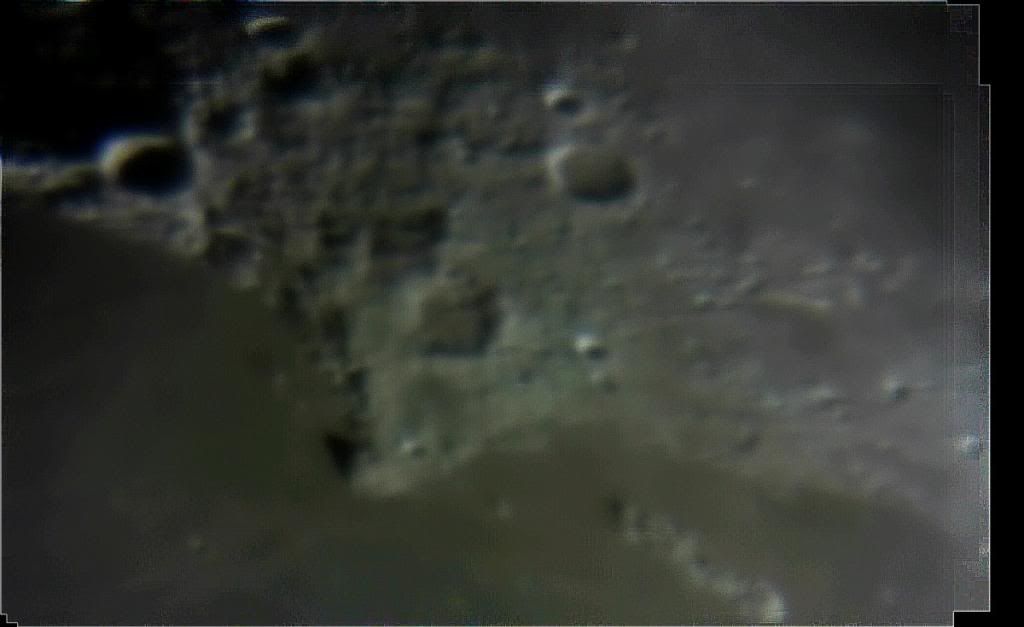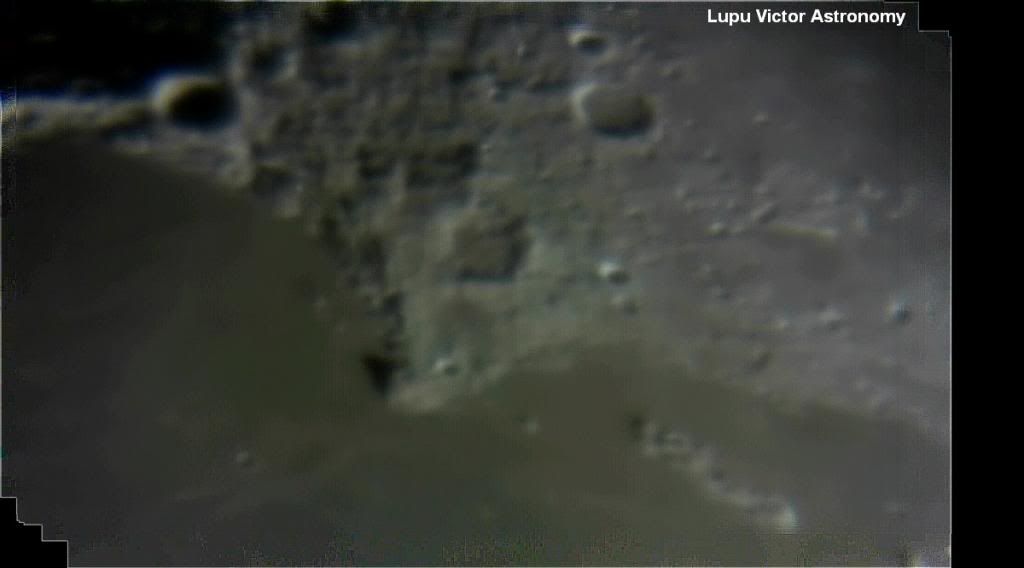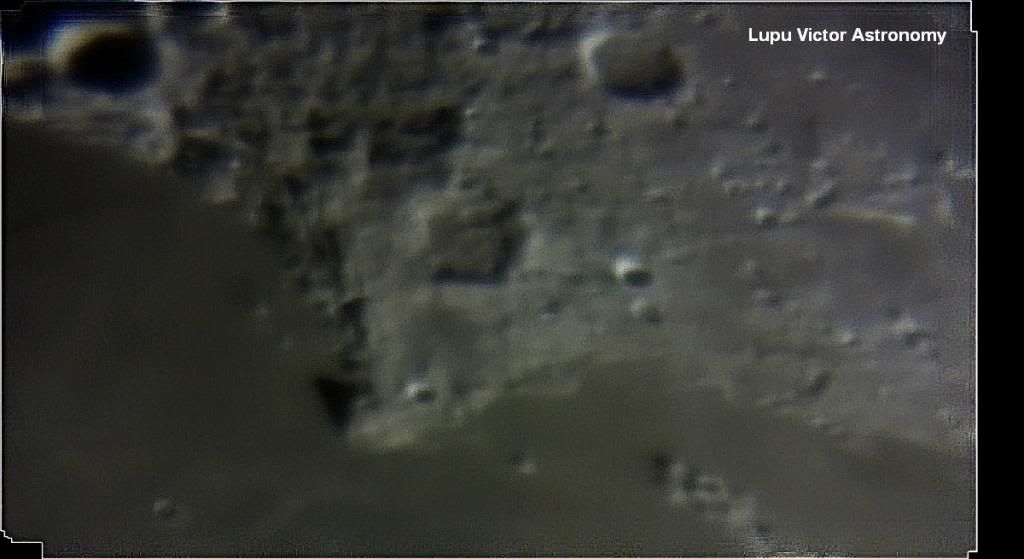Sinus Iridium, located on Mare Imbrium, is a bay on the northern Moon. In these pictures above processed in Registax, we see more of it's eastern part. Mountains belt surrounding it, is actually the northwestern edge of a crater that has survived the floods of Mare Imbrium lava, and is called Montes Jura.
Bianchini crater (38 km), is near the northern edge of the bay. In photos, it is filled by darkness and only the inner wall of the western edge is illuminated by the Sun.
Maupertuis (46 km), however, is another crater that was more enlightened at that time, which is situated at east corner of the Jura Mountains (central in image), near Promotorium Laplace. Maupertius has an irregular shape with a very hilly and rugged floor.
All Montes Jura, is full of high peaks but dull, small craters and larger, as those mentioned above, easily observable by an 8-inch telescope. La Condamine crater, is observed to the north.
Going forward, east of Sinus Iridium, on Mare Imbrium, is a mountain range called Montes Recti, which is like a solitary island in the sea. These mountains taken together have an elongated horizontally shape, like a caterpillar.
Video images were processed in Registax software, video from which were used 11 to 15 frames, with a setting to select only those with 95 percent quality.
Moon Age: 9 days
Phase: 75% (0% = New, 100% = Full)
Distance: 392.049 km
Optics: Celestron C8-Newtonian telescope, 20mm Plossl, 2x Barlow
Mount: CG5 (EQ5)
Camera: Sony CX130
Filter: no
Date: 03/03/2012
Location: Baia Mare, Romania
Processing: Registax, FastStone Image Viewer




 Wednesday, May 01, 2013
Wednesday, May 01, 2013
 Unknown
Unknown





 Posted in:
Posted in: 


0 comments:
Post a Comment